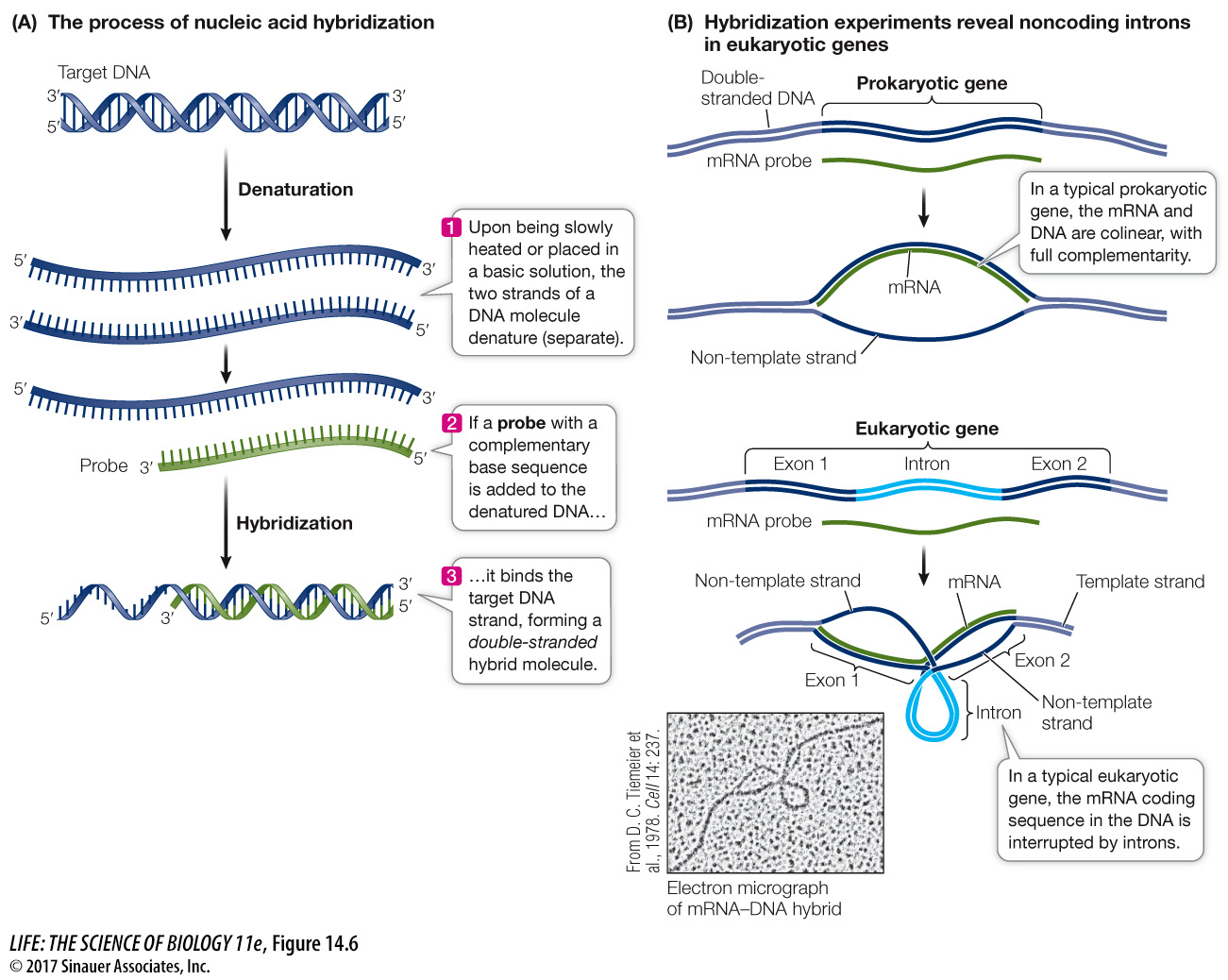key concept 14.4 Eukaryotic Pre-
Since all organisms share the same genetic code, you might expect the process of gene expression to be the same in eukaryotes as it is in prokaryotes. And basically it is. In the last section, you learned about common features for transcription in all organisms. Our focus here is on the differences. Table 14.2 lists the primary differences between prokaryotic and eukaryotic gene transcription.
| Characteristic | Prokaryotes | Eukaryotes |
|---|---|---|
| Transcription and translation occurrence | At the same time in the cytoplasm | Transcription in the nucleus, then translation in the cytoplasm |
| Gene structure | DNA sequence is read in the same order as the amino acid sequence | Noncoding introns within coding sequence |
| Modification of mRNA after initial transcription but before translation | Usually none | Introns spliced out; 5′ end cap and 3′ poly A tail added |
focus your learning
Eukaryotic mRNA transcripts undergo splicing and end modifications before translation.
In prokaryotes and eukaryotes, the sequence of an mRNA that reaches the ribosome is complementary to the sequence of a gene in the organism’s DNA. One way to show this is by the technique of nucleic acid hybridization, shown in Figure 14.6A. This technique involves two steps:
A sample of chromosomal DNA containing the gene is denatured to break the hydrogen bonds between the base pairs and separate the two strands.
The single-
strand mRNA (called a probe) is incubated with the denatured DNA. If the probe has a base sequence complementary to the target DNA, a probe– target double helix forms by hydrogen bonding between the bases. Because the two strands are from different sources, the resulting double- strand region is called a hybrid.

299
Hybridization experiments can be performed with various combinations of DNA and RNA (RNA as target and DNA as probe; DNA as both target and probe, etc.). In many hybridization experiments, the probe is labeled in some way so that its binding to a specific target sequence can be detected. The double-